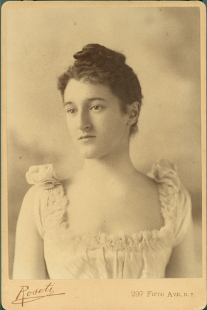Beatrix Farrand
| Beatrix Farrand | |
|---|---|
 |
|
| Born |
Beatrix Cadwalader Jones June 19, 1872 New York City, New York, U.S. |
| Died | February 28, 1959 (aged 86) Mount Desert Island, Maine, U.S. |
| Nationality | American |
| Alma mater | Arnold Arboretum, Columbia School of Mines |
| Occupation | Architect |
| Spouse(s) | Max Farrand (1913-1945; his death) |
| Parent(s) | Mary Cadwalader Rawle Frederic Rhinelander Jones |
| Projects | Dumbarton Oaks, Abby Aldrich Rockefeller Garden |
|
|
|
|
|
Beatrix Cadwalader Farrand (née Jones; June 19, 1872 – February 28, 1959) was a landscape gardener and landscape architect in the United States. Her career included commissions to design about 110 gardens for private residences, estates and country homes, public parks, botanic gardens, college campuses, and the White House. Only a few of her major works survive: Dumbarton Oaks in Washington, D.C., the Abby Aldrich Rockefeller Garden on Mount Desert, Maine, the restored Farm House Garden in Bar Harbor, and elements of the campuses of Princeton, Yale, and Occidental.
Farrand was one of the founding eleven members, and the only woman, of the American Society of Landscape Architects. Beatrix Farrand is one of the most accomplished persons, and women, recognized in both the first decades of the landscape architecture profession and the centuries of landscape garden design arts and accomplishments.
Beatrix Cadwalader Jones was born in New York City on June 19, 1872, into a family among whom she liked to claim were "five generations of gardeners." Her mother was Mary Cadwalader Rawle (1850–1923), whose father was lawyer William Henry Rawle (1823–1889). Her father was Frederic Rhinelander Jones (1846–1918).
She enjoyed long seasons at the family's summer home Reef Point Estate in Mount Desert Island, Maine. She was the niece of Edith Wharton and lifelong friend of Henry James, who called her 'Trix'. At age twenty, she was introduced to one of her primary mentors, the botanist Charles Sprague Sargent, who at Harvard University was both a professor of horticulture at the Bussey Institute and the founding director of the Arnold Arboretum in Boston, Massachusetts.
...
Wikipedia
